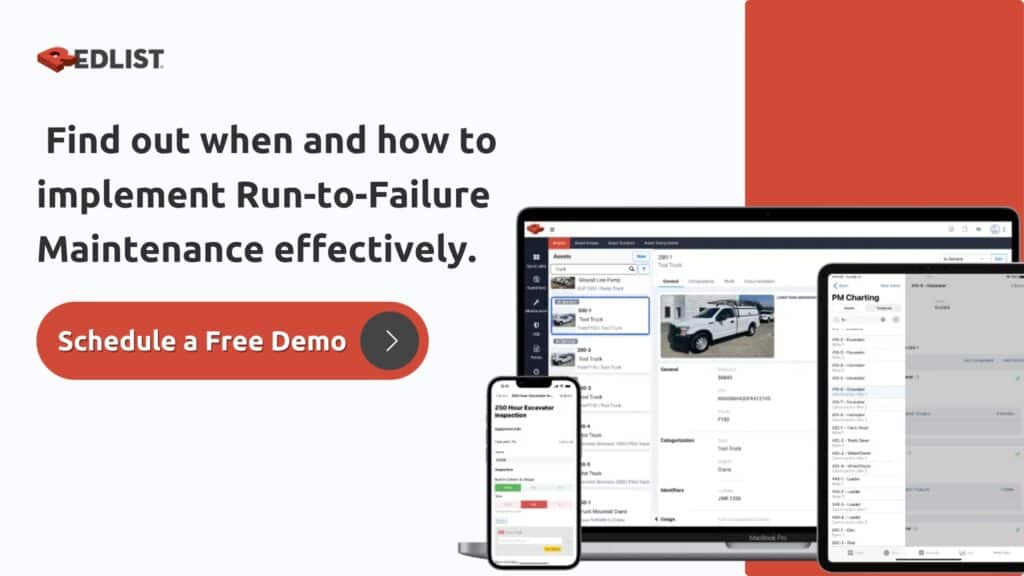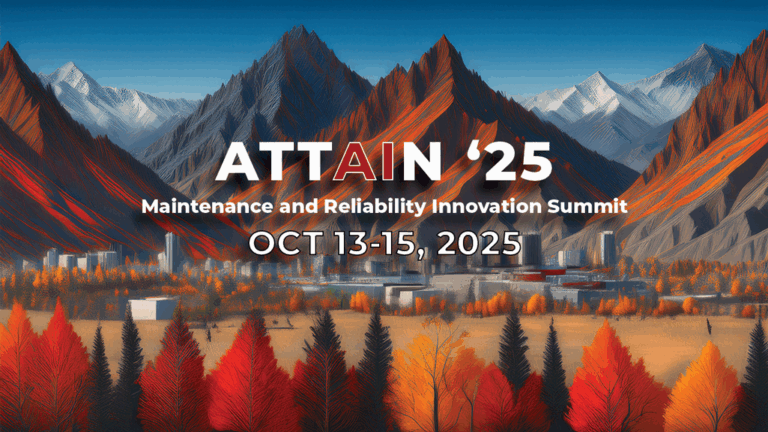One of the essential maintenance strategies, run-to-failure maintenance or RTF, is where you allow your machine, equipment, or asset to run until it fails. RTF is sometimes called reactive maintenance (RM) because both do not involve any planned or preventive maintenance (PM) tasks. However, RTF and RM are different but connected strategies. RTF deliberately allows assets to run without intervention until they break down. RM or unplanned maintenance tasks can then be implemented when a breakdown or failure happens.
In this article, we discuss several situations and conditions that call for RTF maintenance. We also outline the steps for implementing RTF as an integral part of your maintenance system.
Run-to-Failure Maintenance Benefits
RTF maintenance methods can reduce labor, material, and other relevant maintenance costs. Because the tasks required for RTF only occur once failure happens, there is also less planning, scheduling, and assigning of work orders. If planned and implemented correctly, RTF can help prolong the lifespan of assets and obtain the maximum return on investment (ROI). Also, RTF maintenance procedures are simple, making it easy for all maintenance personnel to understand and follow.
When to Use Run-to-Failure Maintenance?
Use run-to-failure maintenance under the following situations and conditions for optimum benefits:
When Assets are Redundant and Non-critical
RTF maintenance is ideal for assets with multiple units as backups or assets that are easy and inexpensive to repair or replace. In other words, RTF is only effective if the anticipated failure is easy to resolve and will not cause major delays to operations.
When Failure Poses Low Risks to Safety
Personnel safety is one of the critical considerations before implementing RTF maintenance. The assets that you allow to function until they fail should not pose risks to the safety of your employees. You must establish protocols to ensure personnel safety in case of a breakdown.
When a Corrective Maintenance Program is in Place
RTF means having a plan of action that will resolve failure when it happens. Thus, an established corrective maintenance (CM) program must be in place for repairing, replacing, or restoring assets when they fail. A CM program integrated into your RTF program helps deal with asset failure faster and more efficiently.
When Corrective Maintenance Costs Less than Preventive Maintenance
RTF maintenance is beneficial only if the costs of resolving failure through CM are lower than that of preventing it through PM. The costs of resolving failure include labor, materials, downtime or operation loss, etc. Note that failure can repeat and increase in severity over time, resulting in increasing CM costs.
Steps in Implementing Run-to-Failure Maintenance
1. Assess the Cost to Purchase or Replace Assets
This step will help you decide whether to implement RTF or PM strategies on a particular asset. If buying a new asset is cheaper than performing PM tasks, RTF is a more cost-effective strategy.
2. Evaluate and Identify Maintenance Labor Costs
Maintenance labor costs can vary depending on the type and skill level required to perform maintenance tasks. These costs can also depend on the type of asset and the expertise required to maintain them. You should have actual data on the labor costs of performing these tasks:
- Preventive Maintenance
- Common Repairs When the Asset Breaks Down
- Replacing Asset if it Fails
3. Identify Downtime and Other Costs Associated with Asset Breakdown
Aside from labor costs, you must also consider other related costs such as:
- Cost of Unplanned Downtime
- Overtime Costs
- Additional Effect or Damages to Other Assets
- Safety and Security Costs
- Decrease in Productivity Due to a Decrease in Employee Comfort or Satisfaction
4. Devise a Plan or Course of Action
This step is where you create a detailed plan for RTF maintenance implementation. This plan must include the following:
- Master list of all the assets involved
- Relevant details or instructions unique for each asset
- Date of installation or the start of use
- Details of maintenance tasks and requirements in case of failure
5. Monitor and Revise the Plan
Monitoring and revision of the RTF program is essential to its success. Assets change over time, and RTF assets may be added or removed from your list. Additionally, as you maintain your assets, you come across valuable information that will prompt you to revise your maintenance strategies.
Implement Run-to-Failure Maintenance with the Support of CMMS Software

When it comes to planning and implementing RTF maintenance, accurate data gathering and analysis are critical. A CMMS or computerized maintenance management system lets you digitize your data, reducing errors while speeding up the process. A user-friendly CMMS like Redlist lets you evaluate more assets than manual methods, resulting in easier planning of maintenance strategies.
Flexible and intuitive, Redlist lets you plan, monitor, and revise your maintenance programs according to your results. It also serves as a cloud-based database that can securely store your asset information, ready to be accessed the instant you need it. At the end of the day, the effectiveness of your maintenance program relies heavily on the accuracy and accessibility of your maintenance data.


